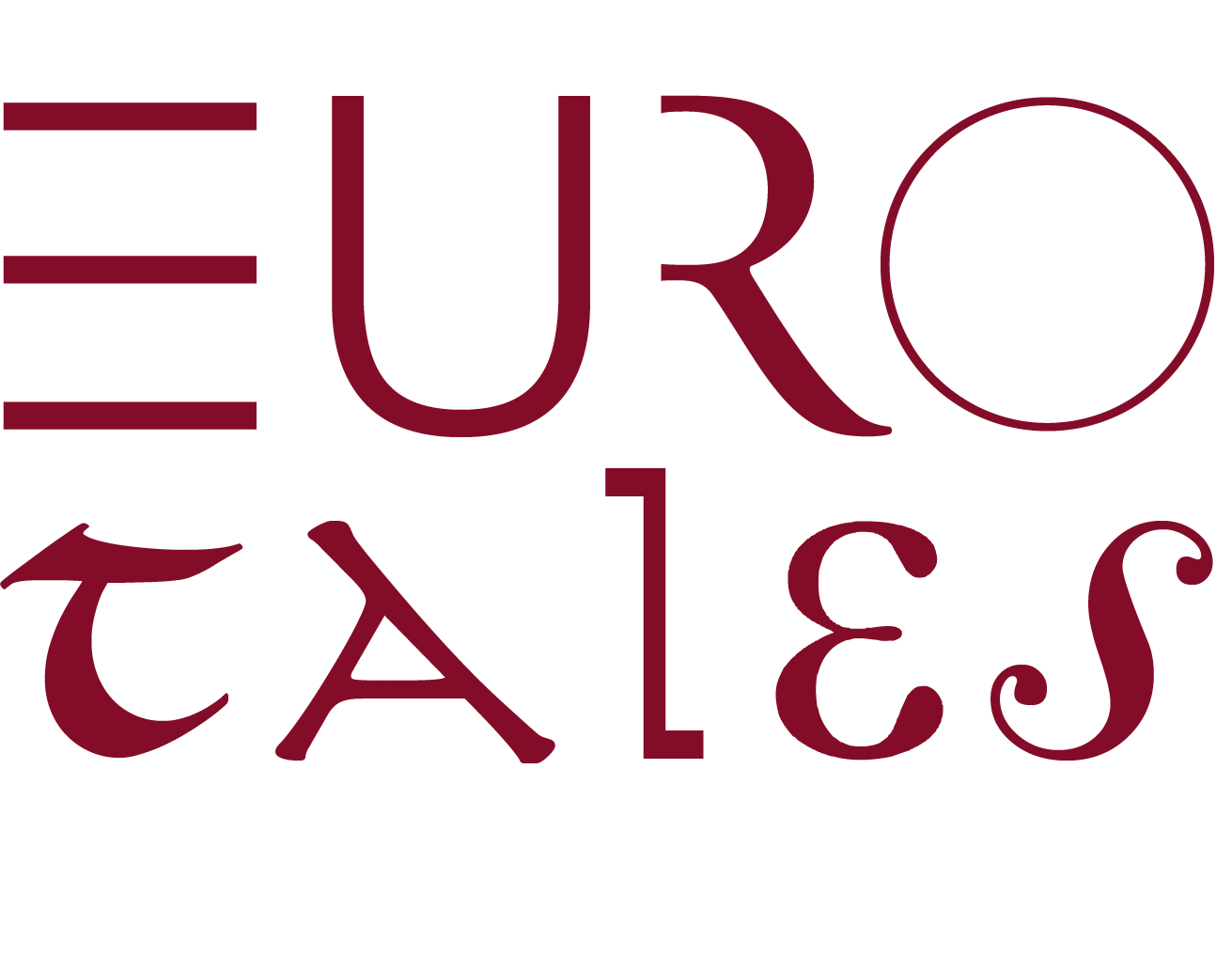Iscrizioni
All four sides (A, B, C and D) are inscribed, as follows. The translations presented amalgams of four recent, respected versions, each duly cited: A (FOOTNOTE): m(ortci)c ar tr(i) (Edwards: The mortal remains of the three) (Williams: This is a memorial of the three) A/D: Tengr(um)ui cimalted gu(reic) / Adgan // anterunc du But Marciau (Edwards/Williams: Tengrumui/Ceinrwy wedded wife of Adgan [lies/lies here] fairly near/close to Bud [and] Marciau/Meirchiaw [or But Marciau].) B/C: Cun ben Celen // tricet nitanam (Davies; Koch; Williams: Cyngen’s corpse dwells/rests beneath/under me [the stone] (Williams: Cun, wife of Celyn : grief and loss remain..) C (FOOTNOTE): cic pe/tuar (Edwards: The mortal remains of four) (Williams: The memorial of four)
Descrizione
[caption id="attachment_9875" align="alignnone" width="200"]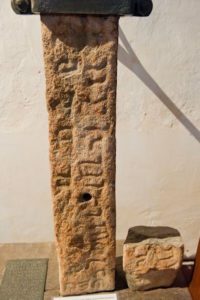 Part of the front of the Tywyn Stone[/caption]
Part of the front of the Tywyn Stone[/caption]
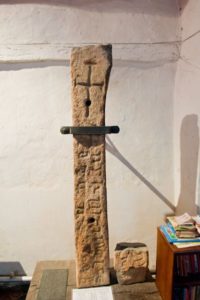 [caption id="attachment_9872" align="alignnone" width="225"]
[caption id="attachment_9872" align="alignnone" width="225"]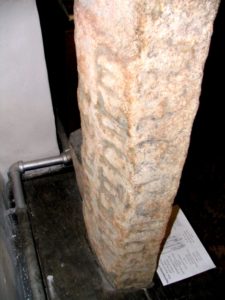 Back and one side of the Tywyn Stone[/caption]
[caption id="attachment_9873" align="alignnone" width="300"]
Back and one side of the Tywyn Stone[/caption]
[caption id="attachment_9873" align="alignnone" width="300"]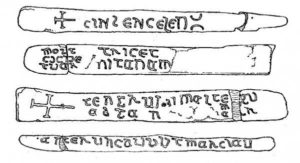 sketch of the inscriptions on the Tywyn Stone[/caption]
This memorial stone monument carries the earliest known inscription in Early Welsh, a development of earlier Brythonic (sometimes called neo-Brythonic). The writing has been variably dated to a time between the 7th and the end of the 9th century. The church in which it is now lodged is documented from 963, but seventeenth century records of the stone, the fact that it declares itself to mark a burial place, and the Early Welsh forms detected in its inscribed language, all indicate that it would originally have been placed out of doors, in a cemetery. Other early church-related inscriptions found in Wales use mostly Latin, the language of the church. This stone, however, provides a trace of Early or Old Welsh voices, speaking their variety of the Celtic languages that had been spoken across Europe and Central Anatolia from at least the Iron Age. The origins of Celtic continue to be hotly debated, but they do belong firmly within the Indo-European group of languages, as a separate branch with its own sub-branches; Welsh is most closely related to Breton, Cornish, and the now-extinct Cumbric, which at the time of the inscriptions would have been identical or near-identical languages. Its speakers identified themselves as Combrogi, or Cymry (‘fellow countryman’), but by the time of the inscriptions on the Tywyn Stone, the Anglo-Saxons were calling them Wealas (‘Welsh’).
sketch of the inscriptions on the Tywyn Stone[/caption]
This memorial stone monument carries the earliest known inscription in Early Welsh, a development of earlier Brythonic (sometimes called neo-Brythonic). The writing has been variably dated to a time between the 7th and the end of the 9th century. The church in which it is now lodged is documented from 963, but seventeenth century records of the stone, the fact that it declares itself to mark a burial place, and the Early Welsh forms detected in its inscribed language, all indicate that it would originally have been placed out of doors, in a cemetery. Other early church-related inscriptions found in Wales use mostly Latin, the language of the church. This stone, however, provides a trace of Early or Old Welsh voices, speaking their variety of the Celtic languages that had been spoken across Europe and Central Anatolia from at least the Iron Age. The origins of Celtic continue to be hotly debated, but they do belong firmly within the Indo-European group of languages, as a separate branch with its own sub-branches; Welsh is most closely related to Breton, Cornish, and the now-extinct Cumbric, which at the time of the inscriptions would have been identical or near-identical languages. Its speakers identified themselves as Combrogi, or Cymry (‘fellow countryman’), but by the time of the inscriptions on the Tywyn Stone, the Anglo-Saxons were calling them Wealas (‘Welsh’).
Welsh has been called the oldest language of Britain, because its Brythonic ancestors have been spoken in Britain for 2,500-4,000 years (Davies). Evidence of Brythonic is found in place names that kept some of the old forms even after some places were settled by Latin and then by Anglo-Saxon speakers. For instance, Dawlish in Devon, Dowlish in Somerset and Douglas in Lancashire come from Brythonic du (‘black’) + glais (‘stream’); and there are six English rivers named Avon, from the Welsh afon (‘river’). The first church settlement on or close by this site dates from 516, and Cadfan – a missionary from Celtic speaking Brittany – was its founder. Before the construction of a stone structure, two wooden churches were built and then destroyed by the Vikings. The Tywyn stone is registered as Tywyn II, Registration number 302689, on the National Monuments Records of Wales. It should not be confused with the very different, Latin-inscribed Cadfan Stone, presently located in the church at Llangadwaladr, Anglesey, which records the death (c. 625) of another Cadfan, the ruler of Gwynedd.
Conservazione
Originally this stone cross stood over 230 cm, but about 30cm of the lower part has been broken off (currently displayed next to the main part). Having been kept out of doors until 1761, the stone is badly weathered and the inscribed lettering very deteriorated and hard to read, even illegible in places. It was further damaged when converted into a gatepost; the 2 holes in side B are likely due to this. The cross carved centrally at the top of the two broader sides indicates that the stone was intended to be set upright, although the inscriptions on all four sides are written vertically.
Bibliografia
Anon, TWYN1/2, «CISP Database», London, University College London, Accessed 5th May 2022, https://www.ucl.ac.uk/archaeology/cisp/database/
I. Williams, “The Personal Names in the Early Anglesey Inscriptions”, «R. Bromwich (ed.) The Beginnings of Welsh Poetry. Studies by Sir Ifor Williams», Cardiff, 1980, 16-24
Janet Davies, The Welsh Language. A History., Cardiff, University of Wales Press, 2014
John C. Koch, "Welsh Language", «Celtic Culture. A Historical Encyclopedia», Santa Barbara, CA., ABC-CLIO, 2005, 1756-1763
Nancy Edwards, A Corpus of Early Medieval Inscribed Stones and Stone Sculptuer in Wales. Vol. III: North Wales, Cardiff, University of Wales Press, 2013
Links
Autore trascrizione: Davies; Edwards; Koch; Williams
Autore scheda: Margaret J-M Sonmez
Tywyn Stone
Tipo di traccia: iscrizione
Materia: Stone
Dimensioni: 218 cm tall x 25 cm wide x 2cm deep . the broken-off piece is approximately 13 cm in height
Datazione: 500-1000
Anno: 7th - 9th c.
Lingua: altro,
